How to Prepare for Manaslu Circuit Trek: A Complete Guide
Are you planning an unforgettable adventure to the majestic Manaslu Circuit? Known for its breathtaking landscapes, remote trails, and cultural richness, this trek is a dream for anyone seeking a blend of thrill and serenity. However, knowing how to prepare for Manaslu Circuit Trek is crucial to making your journey enjoyable and hassle-free.
The Manaslu Circuit Trek is a hidden gem for adventurers seeking a raw Himalayan experience. From crossing the 5,160m Larkya La Pass to wandering through remote villages, this trek offers a unique blend of natural beauty, culture, and adventure. But let’s be real—it’s not a walk in the park. Preparation is key to making this journey both safe and memorable.
In this guide, we’ll walk you through everything you need to know, From fitness training to gear essentials, this guide will walk you through everything you need to get started.
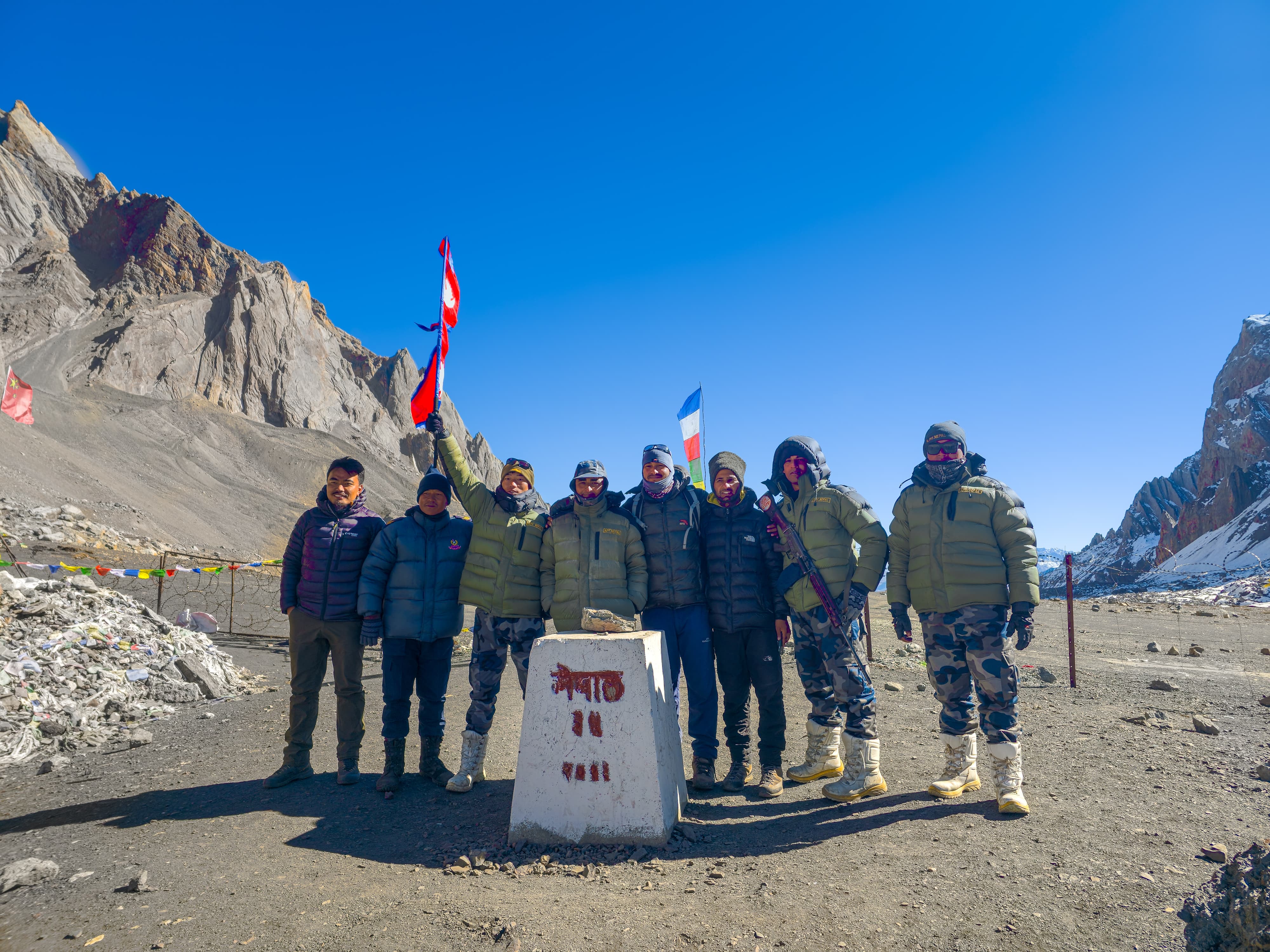
Physical Fitness Preparation
The Manaslu Circuit Trek involves trekking for 6-8 hours daily across rugged terrain at high altitudes. Preparing your body for this challenge is essential.
1. Cardiovascular Endurance
Cardio endurance is essential for sustaining energy over the trek’s long and strenuous days. Begin your training at least 8–12 weeks before your trek.
- Engage in activities like running, cycling, swimming, or brisk walking for at least 30–60 minutes, 4–5 times a week.
- Gradually increase the intensity by incorporating hill climbs or interval training to mimic trekking conditions.
Build stamina to handle long trekking days:
- Running or Jogging: Improves heart and lung efficiency.
- Cycling or Swimming: Low-impact activities that enhance endurance.
- Aim for at least 45-60 minutes of cardio 4-5 times a week.
2. Strength Training
Building muscle strength is vital for managing uphill climbs, downhill descents, and carrying a backpack. Focus on exercises that target the legs, core, and upper body:
- Leg Workouts: Squats, lunges, and step-ups strengthen your thighs, calves, and glutes.
- Core Exercises: Planks, mountain climbers, and Russian twists improve stability and balance on uneven terrain.
- Upper Body: Push-ups and shoulder presses help you manage a loaded backpack.
Focus on muscles used during trekking:
- Leg Strength: Squats, lunges, and step-ups mimic the climbing motion.
- Core Strength: Planks and crunches improve balance and reduce strain on the back.
3. Hiking Simulation
Simulate real trekking conditions by hiking on trails near your home.
- Carry a backpack with 10–15 pounds of weight to prepare for actual trail conditions.
- Gradually increase the length and difficulty of your hikes, aiming for at least 6–8 hours of trekking in one session.
Practice hikes to prepare your body for trail conditions:
- Use weighted backpacks to simulate carrying gear.
- Gradually increase the distance, elevation, and duration of your practice hikes.
4. Flexibility and Recovery
Flexibility prevents injuries and improves comfort during long trekking days.
- Incorporate stretching routines targeting hamstrings, calves, hip flexors, and shoulders.
- Add balance exercises like yoga or single-leg stands to enhance stability on uneven trails.
Stretching or yoga prevents injuries and improves mobility:
- Include stretches targeting calves, hamstrings, and hips.
- Practice yoga to enhance balance and mindfulness.
How to Trek to Manaslu Circuit Trek
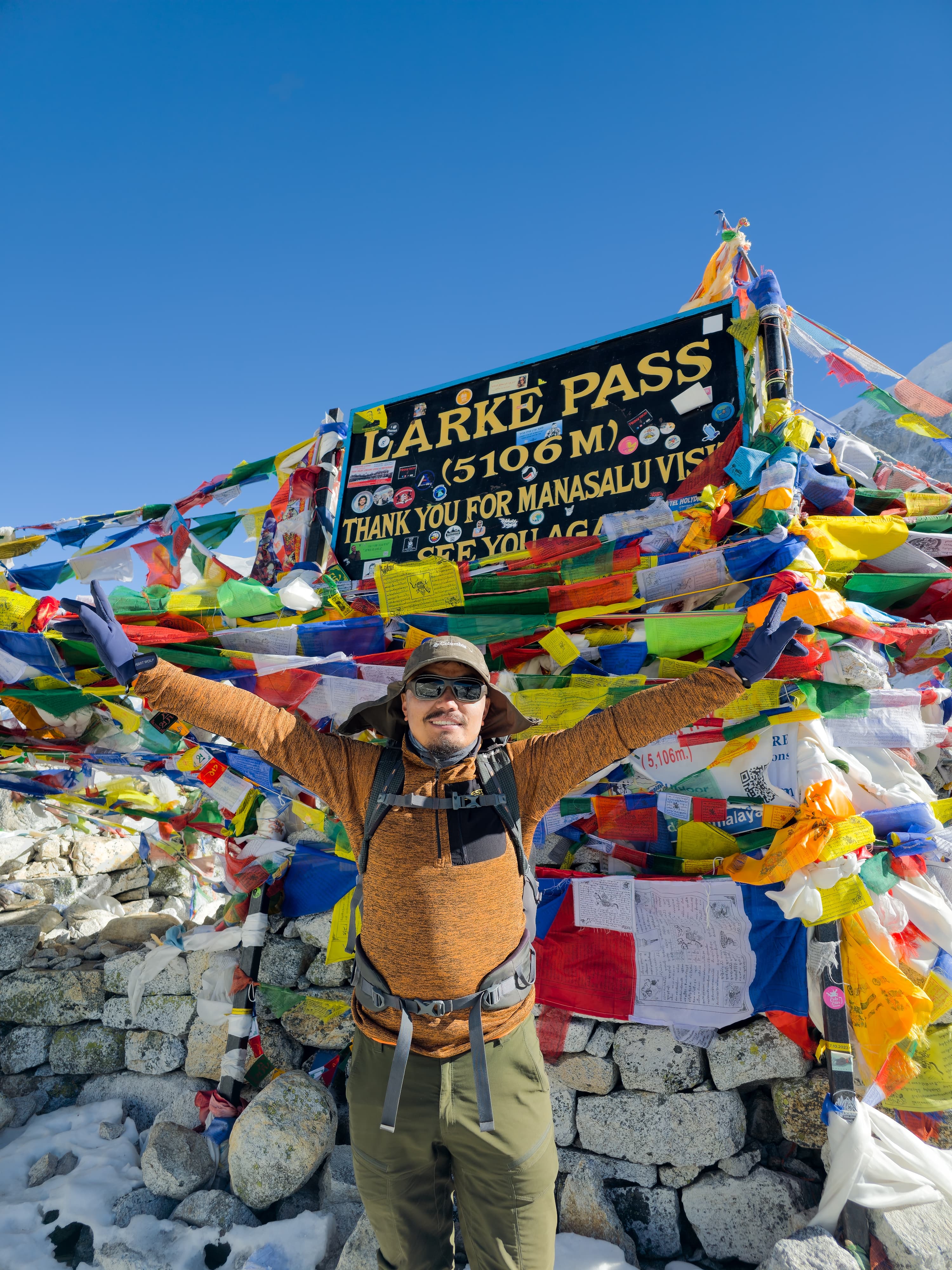
Mental Preparation
The Manaslu Circuit Trek is as much a mental challenge as it is a physical one. You’ll face long days, unpredictable weather, and moments of exhaustion, so mental resilience is key.
- Positive Mindset: Visualize your success and focus on small daily goals.
- Patience and Adaptability: Accept that conditions like weather or delays may change your plans.
- Team Spirit: Whether trekking solo with guides or in a group, fostering a supportive atmosphere can keep morale high.
1. Set Realistic Expectations
Accept that there will be tough days with weather changes or physical fatigue.
Prepare for basic accommodation and limited connectivity during the trek.
2. Visualization
- Imagine yourself successfully completing each milestone, from daily climbs to reaching the Larkya La Pass.
- Use this as motivation when the trek gets tough.
3. Mindfulness Practices
- Meditation and breathing exercises can help manage stress and improve focus.
- Learn to appreciate the small joys of the journey, such as stunning views and cultural encounters.
4. Stay Positive
- Trekking in groups or with guides can boost morale through shared experiences.
- Celebrate small victories, like reaching a checkpoint or completing a challenging ascent.
Medical Considerations
The Manaslu Circuit Trek involves trekking at high altitudes, where oxygen levels are lower, and the risk of altitude sickness increases. Taking proactive steps for your health is crucial.
1. Altitude Sickness (AMS)
Altitude sickness is a common challenge on the Manaslu Circuit due to its high elevations. Knowing how to prevent and manage it is essential:
Symptoms of Altitude Sickness
Headache
Nausea or loss of appetite
Fatigue
Shortness of breath
Prevention Tips
- Acclimatize Properly: Include acclimatization days in your itinerary, especially at higher altitudes like Samagaun or Dharamsala.
- Hydrate Well: Drink at least 3–4 liters of water daily to stay hydrated.
- Climb High, Sleep Low: Follow the golden rule of trekking—ascend to higher altitudes during the day but descend to sleep.
- Avoid Alcohol: It dehydrates you and increases the risk of altitude sickness.
Treatment
- Rest and Descend: If symptoms worsen, descend immediately to a lower altitude.
- Medication: Carry altitude sickness medication such as acetazolamide (Diamox) as prescribed by your doctor.
2. Vaccinations and Precautions
- Vaccinations: Hepatitis A/B, Typhoid, Tetanus, and Rabies are recommended.
- First Aid Kit: Include bandages, antiseptic cream, painkillers, anti-diarrheal medicine, and rehydration salts.
4. Travel Insurance
- Choose a plan covering high-altitude trekking and emergency evacuation.
- Ensure your policy includes helicopter rescue in case of severe altitude sickness.
Gear Checklist and Packing Tips
Packing the right gear is vital for comfort, safety, and adapting to the unpredictable weather of the Himalayas.
Recommedation Read: Trekking Gear in Nepal
1. Clothing
Pack layers to handle varying temperatures:
- Base Layers: Thermal tops and leggings for insulation.
- Mid Layers: Fleece or lightweight down jacket for warmth.
- Outer Layers: Waterproof jacket and pants to protect against rain and wind.
- Trekking Pants and Shirts: Lightweight, breathable, and quick-drying materials.
- Accessories: Woolen hat, gloves, sunglasses, and a scarf or buff for sun and wind protection.
2. Footwear
- Trekking Boots: High-quality, waterproof boots with ankle support. Break them in before the trek.
- Socks: Woolen and moisture-wicking socks (3-5 pairs).
3. Essential Gear
- Sleeping Bag: Rated for -10°C to -15°C.
- Trekking Poles: For stability on uneven terrain.
- Backpack: 30-40L for day-use essentials.
- Headlamp: With extra batteries.
- Water Purification: Tablets, filter bottles, or a SteriPEN.
4. Personal Items
- Sunscreen, lip balm with SPF, and moisturizer.
- Snacks like energy bars, trail mix, and chocolates.
- Small towel and toiletries.
5. Packing Tips
- Use waterproof bags to organize and protect your gear.
- Carry a lightweight daypack for water, snacks, and extra clothing layers.
Permits for the Manaslu Circuit Trek
The Manaslu Circuit is a restricted area, and permits are mandatory to access the region.
1. Required Permits
- Manaslu Restricted Area Permit (MRAP):
- Cost: $70-$100 per week (season-dependent).
- Issued through a registered trekking agency.
- Manaslu Conservation Area Permit (MCAP):
- Cost: Around $20 per person.
- Annapurna Conservation Area Permit (ACAP):
- Cost: Around $20 per person.
2. What You Need to Apply:
- Valid passport.
- Passport-sized photos.
- Travel insurance details.
3. Important Notes:
- Solo trekking is not allowed; you must be accompanied by a licensed guide.
- Your guide or agency will handle permit arrangements.
Environmental Responsibility
The Manaslu Circuit Trek takes you through fragile ecosystems and remote villages. As a responsible trekker, your actions can help preserve this environment for future generations.
1. Leave No Trace Principles
- Carry all trash, including plastics and batteries, back with you.
- Avoid littering and use designated waste bins wherever available.
2. Avoid Single-Use Plastics
- Bring a reusable water bottle and purification system instead of buying plastic bottles.
3. Respect Wildlife and Local Culture
- Observe animals from a distance and avoid disturbing their habitats.
- Ask for permission before photographing locals or entering religious sites.
4. Stay on Trails
- Avoid taking shortcuts that can lead to soil erosion.
- Stick to marked paths to protect the surrounding vegetation.
5. Support Local Communities
- Stay in locally-owned teahouses and purchase handmade goods or services from locals.
- Be respectful of local customs, dress modestly, and learn basic Nepali or Tibetan greetings.
The Importance of the Manaslu Circuit
The Manaslu Circuit Trek is more than just a physical adventure; it’s a journey into one of Nepal's most untouched and culturally rich regions. Nestled in the shadow of Mount Manaslu, the world’s eighth-highest peak, this trek offers a unique combination of raw natural beauty and deep cultural immersion. Unlike the bustling Annapurna or Everest regions, the Manaslu Circuit remains relatively less crowded, making it perfect for those seeking solitude amidst nature.
The trek also plays a vital role in supporting the local economy, with villages like Samagaun and Lho benefiting from tourism. By trekking responsibly, you contribute to preserving the fragile ecosystem and supporting local livelihoods. For seasoned trekkers and first-timers alike, the Manaslu Circuit is a must-experience trail for its blend of adventure, heritage, and pristine landscapes.
Best Season to Trek the Manaslu Circuit
Choosing the right time to trek is crucial for a successful journey. The two best seasons are spring (March to May) and autumn (September to November):
- Spring: During this time, the trails are adorned with blooming rhododendrons, making for stunning scenery. Temperatures are moderate, and the skies are often clear, providing excellent views of the snow-capped peaks.
- Autumn: Renowned for its stable weather and crystal-clear visibility, autumn is the most popular season for trekking. You’ll experience comfortable daytime temperatures and cooler nights, ideal for crossing high passes like Larkya La.
Avoid trekking during the monsoon (June to August) due to slippery trails and landslide risks, and winter (December to February) unless you’re prepared for extreme cold and potential snow-blocked routes.
Nutrition and Hydration During the Manaslu Circuit Trek
Proper nutrition and hydration are fundamental to a successful trek, especially in high-altitude conditions. Here’s how you can fuel your body during the journey:
- Nutrition:
- Carbs Are Key: Focus on carbohydrate-rich foods like rice, potatoes, and pasta to provide the energy needed for long days of trekking.
- Protein for Recovery: Incorporate protein sources such as lentils (dal), eggs, and cheese to aid muscle repair.
- Snacks for the Trail: Pack energy bars, nuts, and dried fruits for quick energy boosts during the hike.
- Hydration:
- Stay Hydrated: Drink at least 3-4 liters of water daily to combat dehydration at high altitudes.
- Purify Water: Carry water purification tablets or a portable filter to safely drink from streams and taps along the trail.
- Avoid Alcohol and Excess Caffeine: These can lead to dehydration and increase the risk of altitude sickness.
Maintaining proper nutrition and hydration helps keep energy levels up, reduces fatigue, and minimizes the risk of altitude-related issues. Remember, the higher you go, the more deliberate you need to be about fueling your body.
Also you can read our blog, Ultimate Guide For Manaslu Circuit Trek for more details.
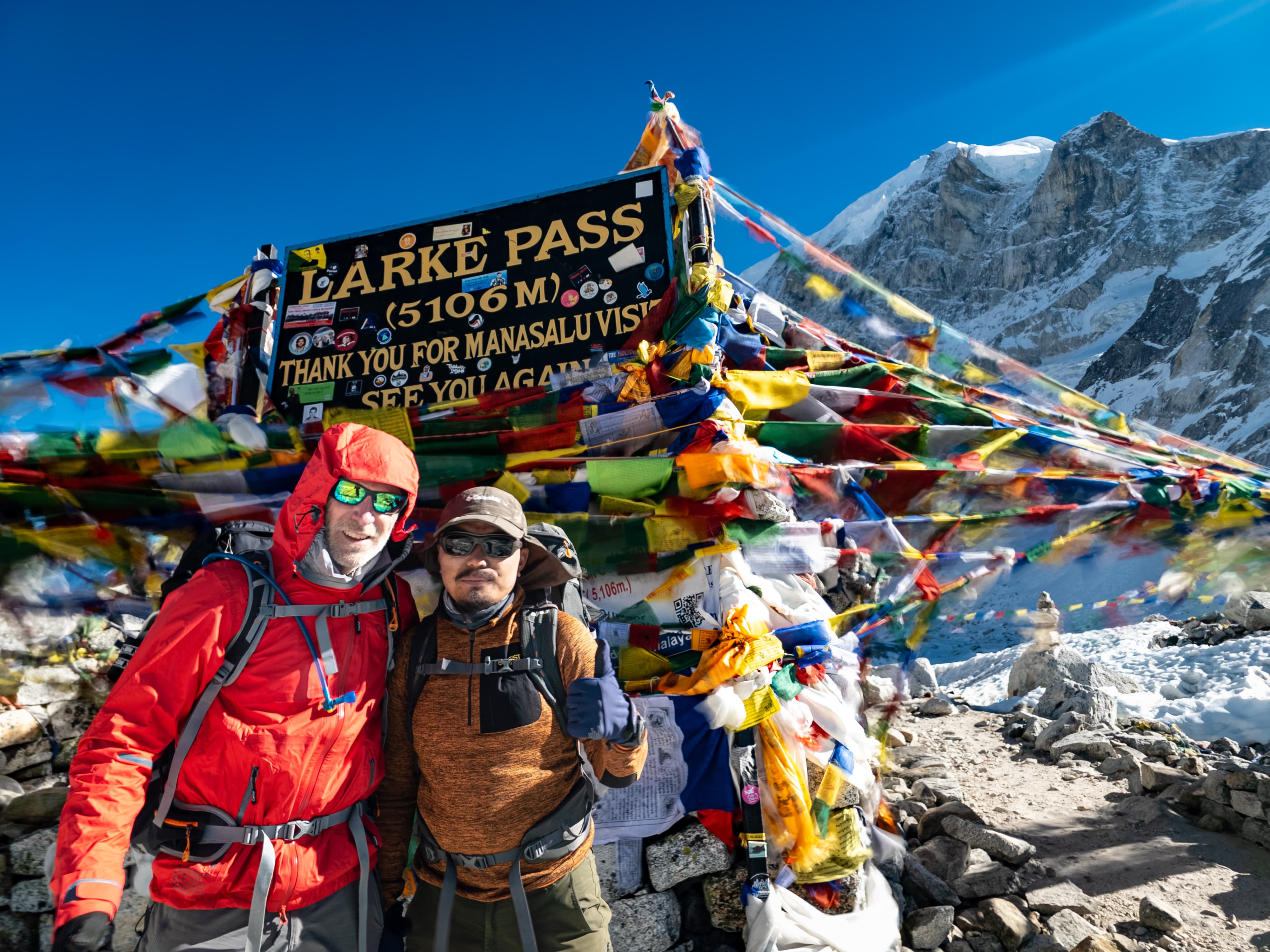
Final Thoughts
Preparing for the Manaslu Circuit Trek is a rewarding process that enhances your ability to tackle the challenges ahead. By focusing on physical fitness, mental resilience, medical precautions, proper gear, and responsible trekking practices, you’ll ensure a safe, enriching, and unforgettable journey.
Are you ready to take on this incredible adventure? Let us know how you’re preparing or feel free to share your questions in the comments below!
FAQs
How difficult is the Manaslu Circuit Trek?
The trek is considered moderately difficult. It involves long daily hikes, high-altitude challenges, and steep ascents/descents. Proper fitness and acclimatization are key to a successful trek.
Do I need a guide for the Manaslu Circuit Trek?
Yes, trekking solo is prohibited. A licensed guide and at least two trekkers are mandatory to obtain permits for the restricted area.
What permits are required for the trek?
You’ll need the Manaslu Restricted Area Permit (MRAP), Manaslu Conservation Area Permit (MCAP), and Annapurna Conservation Area Permit (ACAP).
Can beginners do the Manaslu Circuit Trek?
While beginners can attempt it with proper preparation and training, prior trekking experience is highly recommended due to the trek’s physical demands and high-altitude challenges.
What is the best time to trek the Manaslu Circuit?
The best seasons are spring (March-May) and autumn (September-November). These months offer stable weather, clear views, and manageable trail conditions.
How long does the Manaslu Circuit Trek take?
The trek typically takes 14-18 days, depending on your pace and acclimatization schedule. we, Dolpo Caravan Treks and Expedition, are providing a Manaslu Circuit Trek package Option within 18 Days of the complete itinerary.
Is it possible to trek the Manaslu Circuit without prior high-altitude experience?
Yes, but you must be well-prepared physically and mentally. It’s crucial to acclimatize properly and take precautions to avoid altitude sickness.
What should I pack for the Manaslu Circuit Trek?
Pack layers for varying weather, sturdy trekking boots, a sleeping bag rated for -10°C, trekking poles, and essentials like water purification tablets and a first-aid kit.
Are there ATMs or card payment options along the trail?
No, there are no ATMs or card payment facilities on the trail. Carry enough cash (in Nepali Rupees) for your expenses.
How much does the Manaslu Circuit Trek cost?
The cost varies but typically ranges between $1,000 and $1,500, including permits, guide fees, food, accommodation, and transportation.
How many kilometers is the Manaslu Circuit Trek?
The trek covers approximately 177 kilometers (110 miles), with daily hikes averaging 10-15 kilometers.
Is the Manaslu Circuit Trek worth it?
Absolutely! The trek offers unparalleled views of Mt. Manaslu, cultural immersion in remote villages, and a less crowded alternative to Everest and Annapurna treks.
Can I trek the Manaslu Circuit independently?
No, independent trekking is not allowed. A guide and at least two trekkers are required by Nepalese regulations.
Are there teahouses on the Manaslu Circuit Trek?
Yes, the trail has teahouses providing basic accommodation and meals. They are cozy but can be limited in remote areas, so plan ahead.
What altitude is the Larkya La Pass?
The Larkya La Pass, the highest point of the trek, is at an altitude of 5,160 meters (16,929 feet).

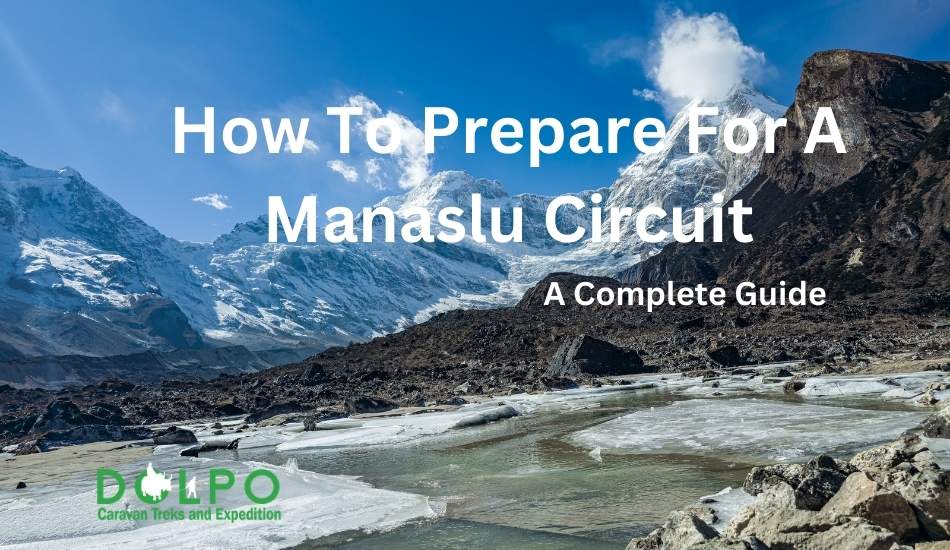
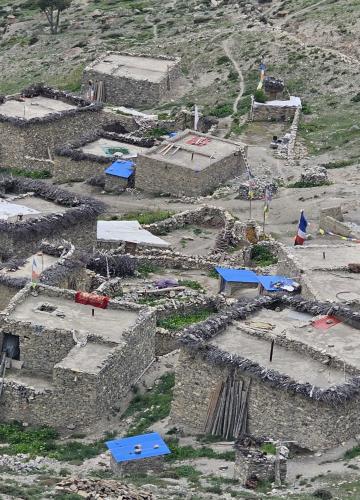
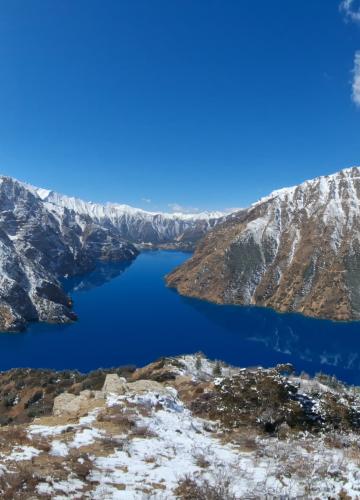
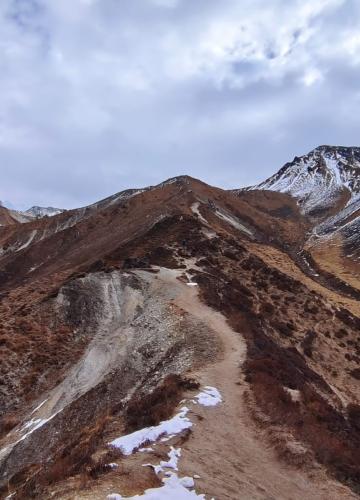
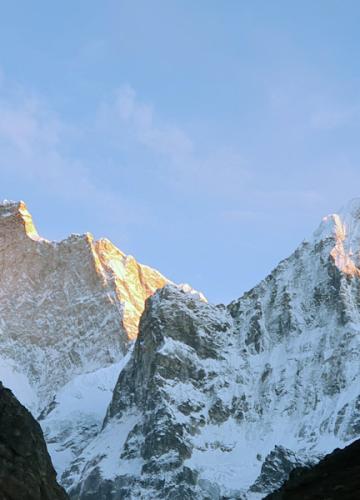
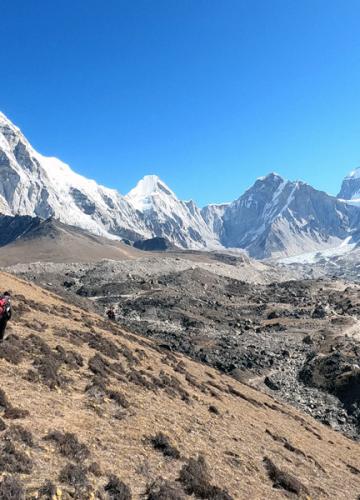

Leave Your Comment